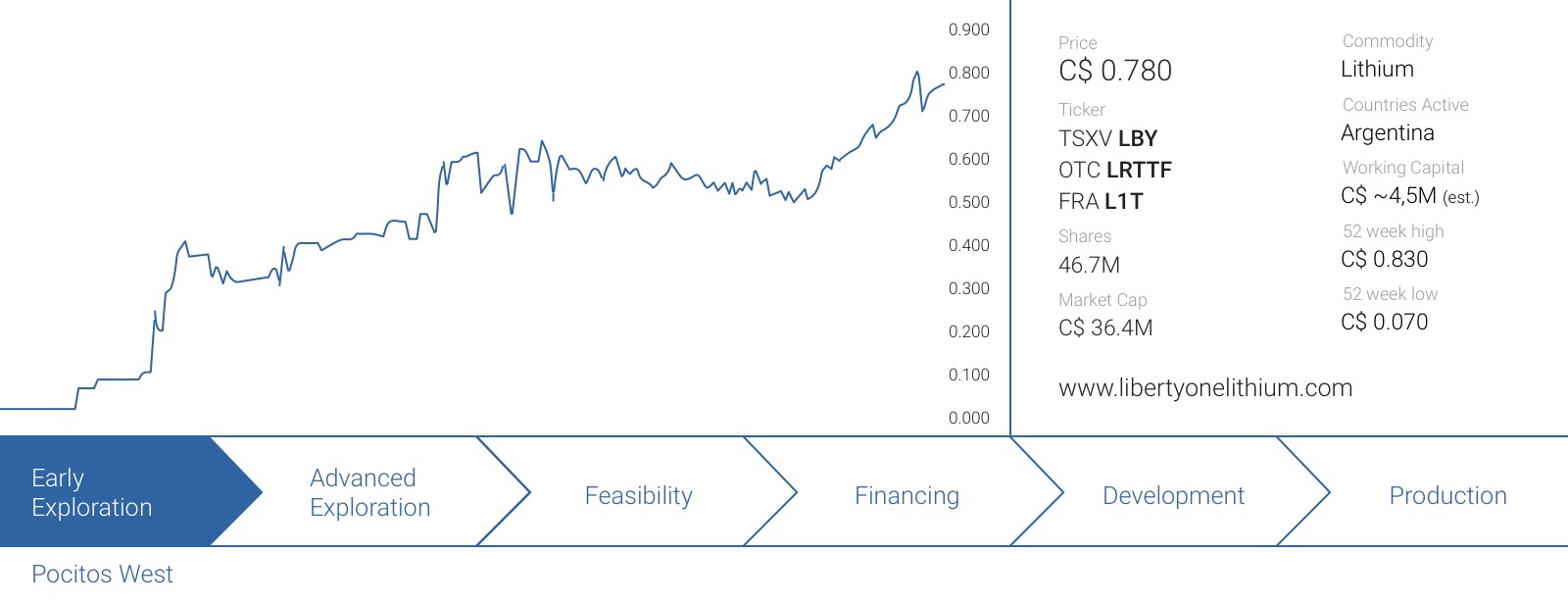Liberty One Lithium (LBY.V) is also joining the ranks of Argentinean lithium explorers as the company is acquiring the Pocitos West project from Millennial Lithium through a staged earn-in process. Although Pocitos should be considered to be an early stage exploration project, there are lots of indications it could host a sizeable lithium brine.
In this first report, we will have a look at the Pocitos West project and the current situation on the Lithium market, explaining why there’s definitely more room for an additional lithium producer as the demand curve still seems to be accelerating.
Why Lithium?
We can’t ignore the sudden focus on Electrical Vehicles and perhaps even the home-batteries, which are all using lithium-based technology to store the energy in a battery. The Li-ION batteries are omnipresent and as more applications are being developed on a daily basis, the demand for lithium is expected to increase as well. This opens up a sea of possibilities for companies with good projects which could be brought into production within the next 5-10 years.
A lot depends on the so-called penetration rate of electrical vehicles (‘EV’) as part of the total amount of vehicle sales. Whilst the current penetration rate is just 1.5-2%, the car manufacturers are expecting (or at least aiming for) a penetration rate of 25% by 2025. Whilst this might prove to be quite optimistic (after all, 2025 is just 8 years away), there’s a very clear favorable momentum for EV’s as the batteries for the cars become cheaper and perform better. The next chart was published in a ‘Specialty Minerals and Metals’ report by Canaccord genuity in June, and gives you a good idea of the expected acceleration of the EV penetration rate (note: Canaccord is expecting a 14% penetration rate in 2025 which is substantially lower than the expectations of the car makers, but a substantially higher ratio compared to the current situation).
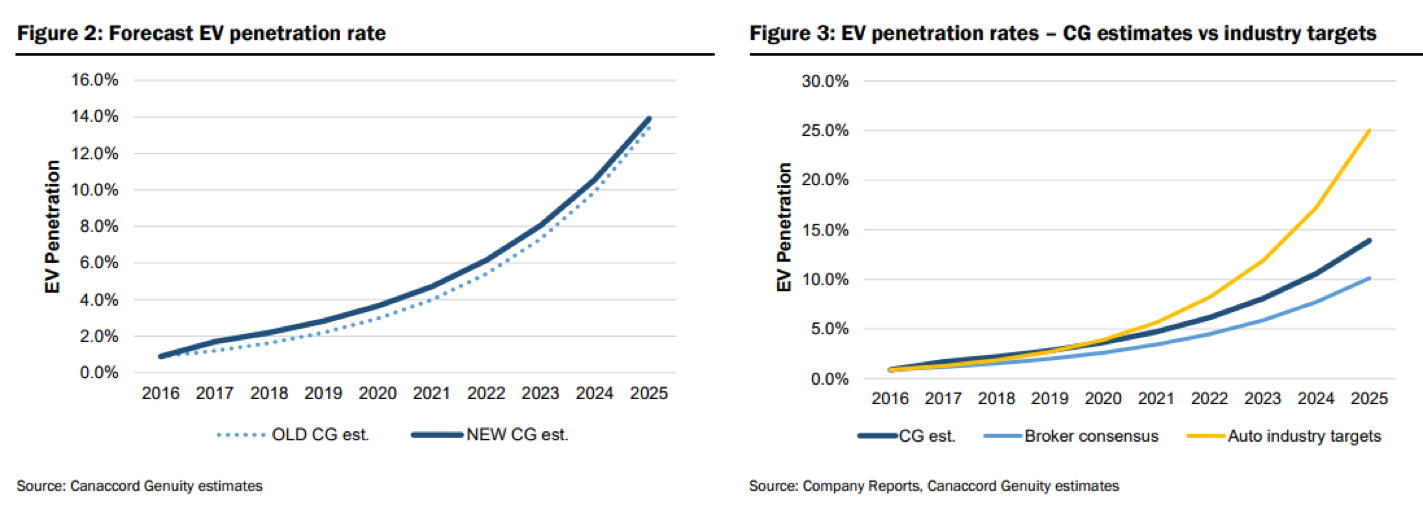
The same brokerage outfit expects the total demand for lithium carbonate equivalent (LCE) to increase from 261,000 tonnes in 2017 to almost 767,000 tonnes by the end of 2025 which indicates the total LCE demand will almost triple (Goldman Sachs is a bit more conservative and estimates the 2025 demand to be approximately 530,000 tonnes). However, the next chart also shows the broker is expecting a lithium supply surplus in the next few years, but we don’t necessarily agree with that view.
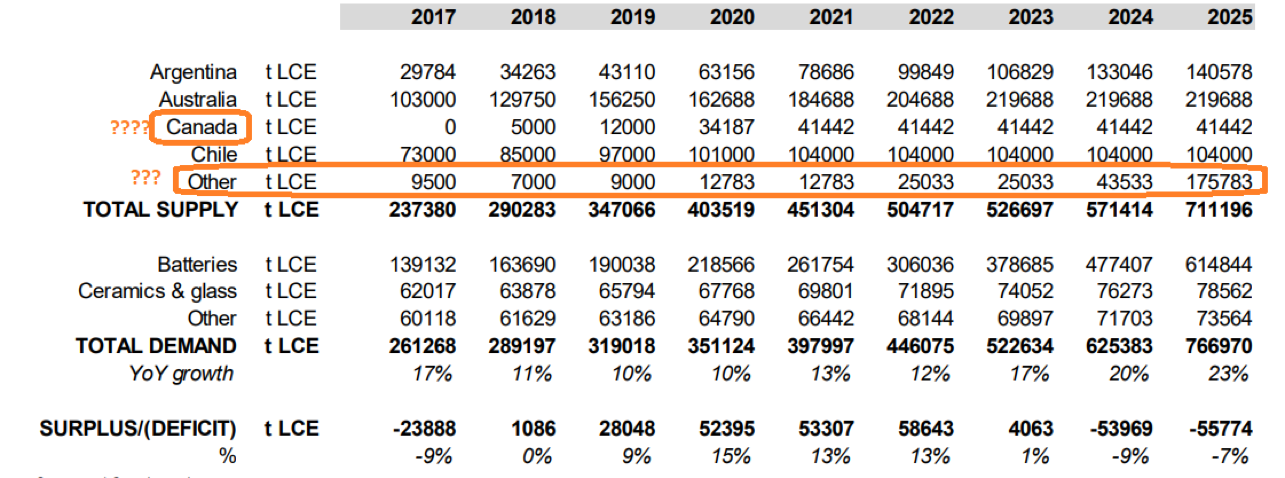
After all, it looks like the supply side is taking a lot of wild assumptions into account. The large production increase from Australia and Chile will become reality as the expansion of Albemarle’s Greenbushes project and SQM’s Atacama project has already been approved, but we would be curious to learn how the production from Argentina is supposed to quintuple, whilst we are also uncertain about the assumption Canada will contribute 41,400 tonnes of LCE per year whilst the ‘Other’ countries are estimated to contribute a production increase of 160,000 tonnes.
On top of that, there’s no guarantee the sanctioned lithium projects will effectively reach their nameplate capacities. Orocobre’s (ORL.TO, ASX:ORE) Olaroz project, for instance, started to produce lithium carbonate more than 2 years ago and still hasn’t reached its name plate capacity. The total production in the past 12 months was less than 12,000 tonnes of LCE and nobody is even expecting Orocobre to meet its 17,500 tpa target in its current financial year.
The potential supply increases actually all boil down to two parameters. 1. How expensive is it to build a mine? And 2. What will the operating cost per tonne of LCE be?
And that’s why here at Caesars we predominantly focus on the opportunities salar-based projects are offering. Not only is it much cheaper to build a production and processing facility, the production cost is usually much higher as well as hardrock projects are generally more capital intensive, labor intensive and energy intensive.
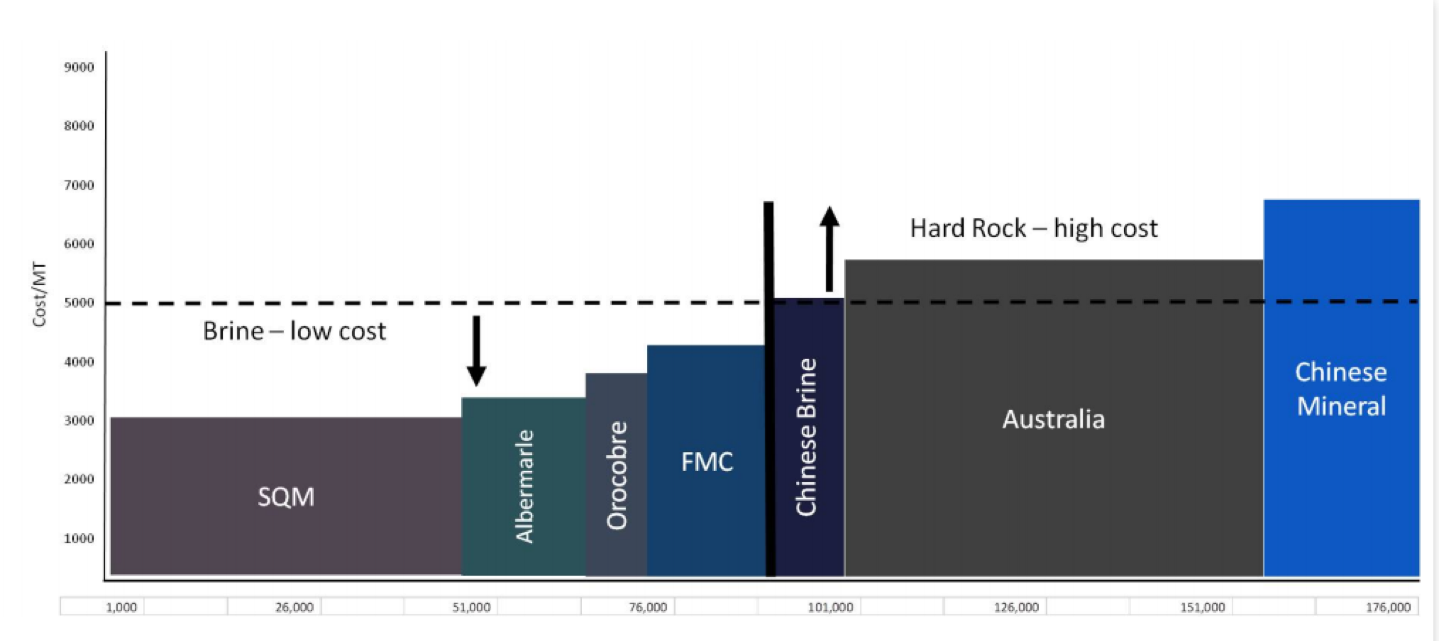
As you can see in the previous image, not only do the salar-based lithium operations have a lower initial capex, the production cost is much lower as well (it’s not very energy intensive nor labor intensive to let water evaporate in ponds) which means that the hard rock projects aren’t just (much) more expensive to build, the operating margin will be lower as well.
Why Argentina?
Granted, Argentina hasn’t always been one of the better jurisdictions in South America, and even inside Argentina there are substantial differences on the provincial level (according to Argentinean law, the mineral resources belong to the provinces rather than the federal state). Fortunately Pocitos West is located in Argentina’s Salta province which isn’t only mining-friendly, but its mining directorate also has plenty of experience with operating salars.
But of course, the federal framework is at least as important as the local levels, and it’s only after president Kirchner left office in 2015, Argentina really started to welcome foreign investment with business-friendly measures (by allowing the Argentinean Peso to float, making repatriating money easier, etc.). This resulted in Argentina gaining quite a few spots on the ranking of the Fraser Institute, which ranks the jurisdictions based on how easy it is to do business in a specific country or area.
In fact, the Fraser Institute has divided Argentina in several levels, and it’s really interesting to see it ranks Salta in a better position than for instance Guyana, New Zealand, Mexico ànd Alberta based on the overall ‘investment attractiveness index’. If we would just take the ‘policy perception index’ into consideration, Salta has been ranked 29th, ahead of British Columbia (41), Peru (54), New Mexico (30) and New Zealand (39).
Not all Argentinean regions have been created equal, but Salta is most definitely one of the best areas of the country to work in.
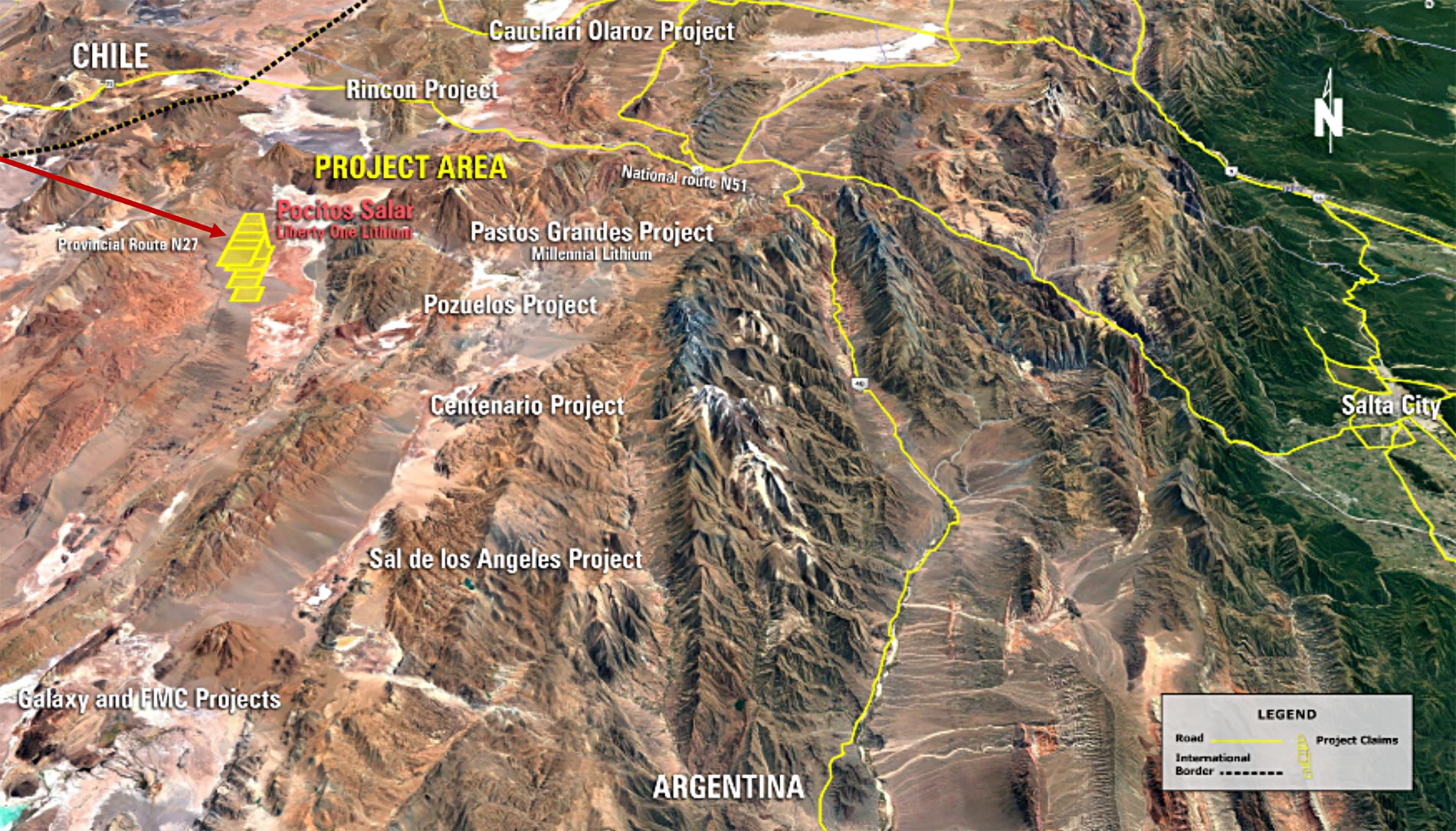
About Pocitos West
The Pocitos West property is located in the Puna region of Argentina at an elevation of approximately 3,800 meters above sea level, and could be reached by road from Salta, the capital of the province, via a 165 kilometer asphalt & gravel road through a relatively remote area.
The closest village is the village of Pocitos which has just a few dozen inhabitants which could be seen as ‘base camp’ for now as the larger town of San Antonio de los Cobres (where we stopped on our way to Millennial Lithium’s Pastos Grandes project last year) is approximately 2 hours away from the Pocitos West property.
What makes Pocitos West attractive as a project is the fact it’s located on the right trend. Most lithium brines occur on trends and the Salar de Pocitos shows the same north-south structures as for instance the Cerro del Rincon lithium project owned and operated by Enirgi. The salt flats at Pocitos are located within the same tectonic depression as the Rincon salar and whilst the Pocitos West claims aren’t located right on top of the salar but rather on the western margin of the salar, Liberty One’s claims are exactly where you want them to be.

After all, based on recently gained deeper knowledge and a better understanding of the salars owned by Orocobre, Lithium Americas and Eramine, it becomes clear the better setting for lithium-rich zones is actually along the margins of those salars. According to QP Iain Scarr the sediments are coarser along the margins which allows for larger brine zones to be created due whilst the porosity levels should be better as well.
The Pocitos Salar is known as a ‘Silver Peak’ type of salar (Silver Peak in Nevada was where the first lithium brine deposit was brought into production), which basically means the types of salars associated with this type are contained within deep structural depressions which contain the sediments (often associated with layers of clay).
Whilst the Pocitos West expectations are merely based on an exploration theory and whilst there has been no historical activity on the Pocitos West claims, the Pocitos Salar itself has been explored in the 70’s when the Argentina Geological Survey drilled a series of very shallow holes. Despite drilling just 20 meters deep (which is really shallow, considering for instance Millennial Lithium has confirmed the brines at Pastos Grandes extend to a total depth of at least 600 meters from surface), almost all holes tested positive for Lithium and Kalium (Potassium), with a high-grade result of up to 417 mg/l (which is surprisingly high for a shallow hole).
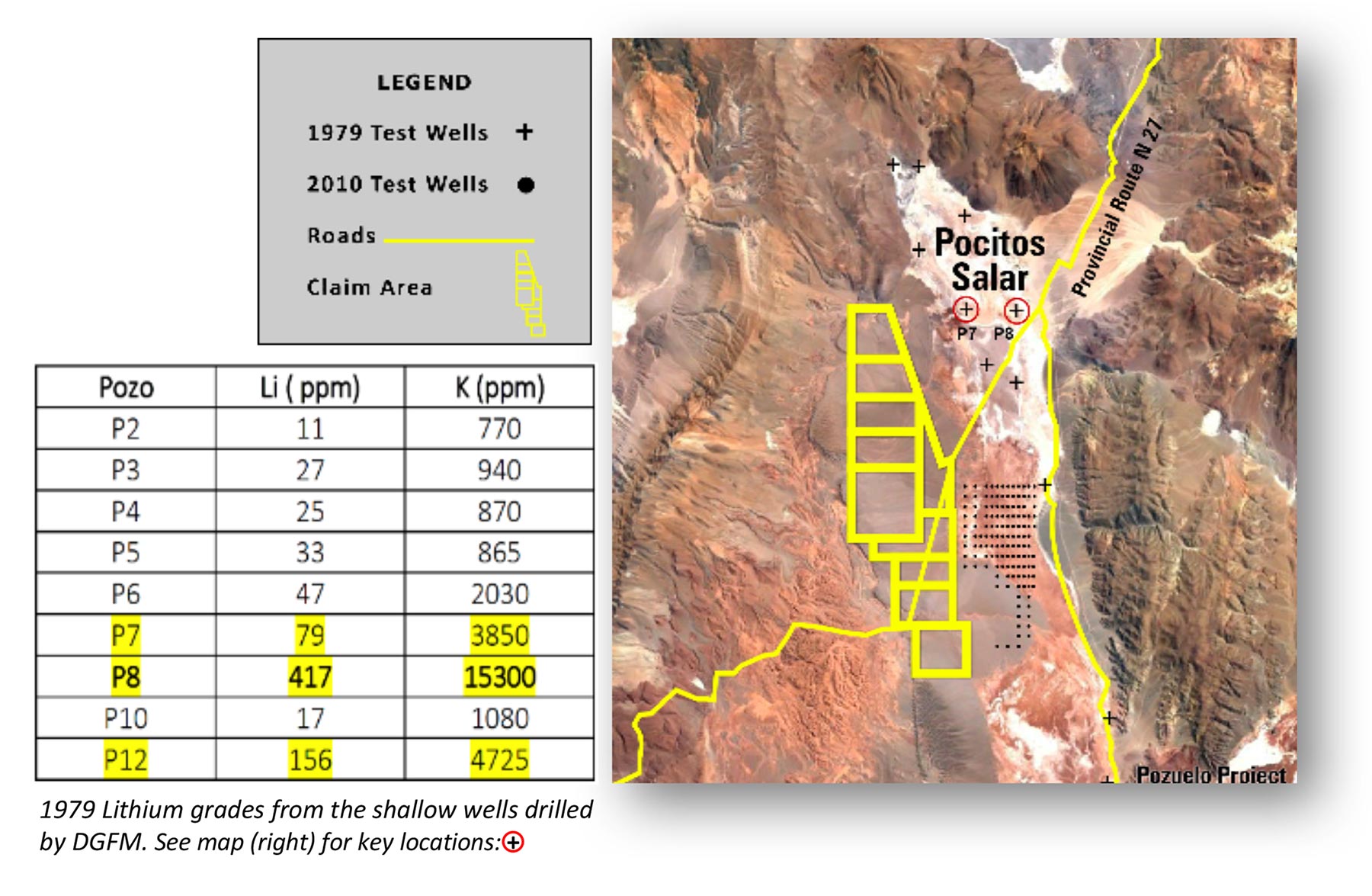
Fast forward to 2010 when Li3 Energy drilled a bunch of test wells on a land package directly adjacent to the Pocitos West claims. During its test well program, Li3 Energy confirmed two large anomalies which appear to have the exact same north-south structure as could be expected on this trend and according to Liberty One, the correlation between the LI-K anomalies and the geophysical target zone confirm the exploration potential at Pocitos West.
Meanwhile, the company has now kicked off a first geophysical survey at Pocitos West focusing on a vertical electrical soundings survey which is able to detect the variation in conductivity. This will allow Liberty One Lithium to ‘map’ the the subsurface area and figure out the types of sediments and the depth and location of the basement rocks.
This geophysical survey has now been completed and the results exceeded the company’s and our expectations as the survey detected a potential brine horizon over the entire 29 kilometer long property. That’s an amazing result considering Liberty One’s Pocitos West has a total surface area of approximately 160 square kilometers.
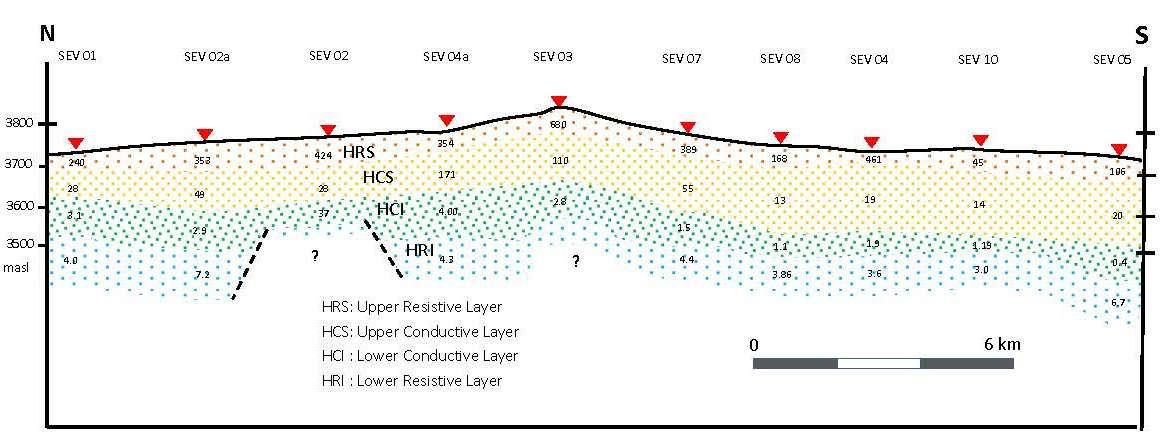
length of the north-south section.
Not only is the length of the potential brine horizon impressive, the survey also indicates the horizon could have a thickness of up to 150 meters based on the data collected from 11 different stations along the 29 kilometer long Pocitos West project. These data collection stations were using Vertical Electrical Soundings to figure out the different variations of the subsurface conductivity. As brines are supposed to be highly conductive, it wasn’t too difficult to see the target popping up from the less conductive zones.
This is a great achievement as Liberty One Lithium was only hoping to find several hot spots for brine potential on Pocitos West and the substantial size of the potential brine horizon should lead to a sizeable exploration target of several million tonnes of lithium carbonate equivalent.
Of course, the proof will be in the pudding and Liberty One Lithium has already started the permitting process to start a drill program at Pocitos West as soon as possible. LBY is aiming to start a drill program in the fourth quarter of this year which will drill-test Pocitos West for lithology, permeability, porosity and chemistry.
The road to owning 80% of Pocitos West
As Millennial Lithium was also earning its 100% stake in Pocitos West from the vendor, Liberty Lithium’s earn-in agreement is pretty similar. The company will have to make a total cash payment of US$5.5M and complete C$1M in work commitments to earn an initial 70%, where after it could earn an additional 10% if it completes a bankable feasibility study within 3.5 years after signing the definitive agreement (which would be December 15th 2020).
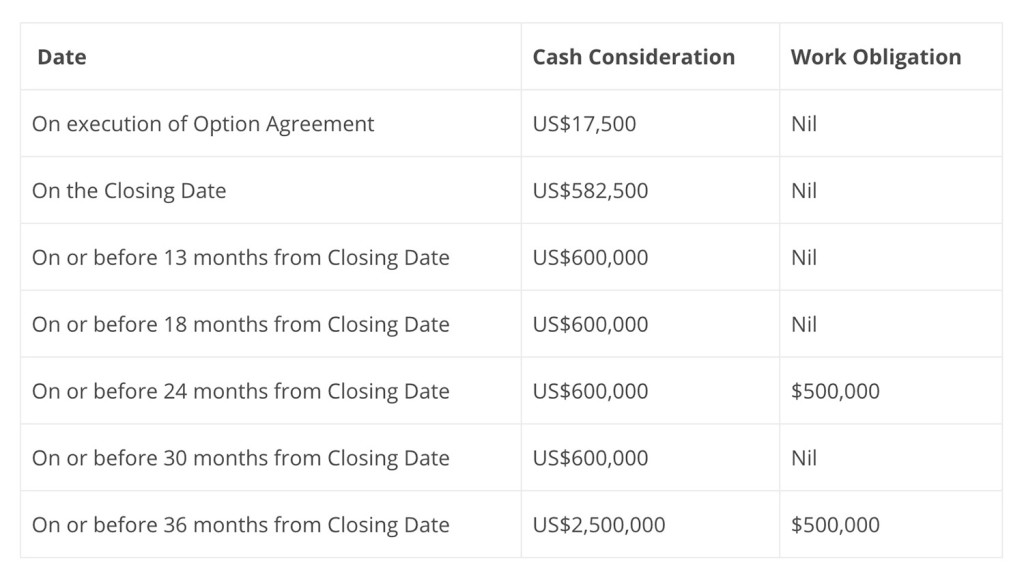
A first US$600,000 cash payment has already been made to Millennial Lithium, and the next US$600,000 will only be due in July 2018 which gives Liberty One plenty of time to explore the Pocitos West salar before continuing its earn-in phase. Although the first C$500,000 work commitment will only have to be completed within the first 24 months after closing the acquisition agreement, we expect Liberty One Lithium to move much faster than that and wouldn’t be surprised to see the entire C$1M work commitment be completed by the summer of next year.
About Liberty One Lithium as a company
As we have already spent considerable amounts of time looking at Millennial Lithium (ML.V) which is developing its flagshop Pastos Grandes lithium project in Salta, we gained a specific affinity in and knowledge about Argentinean salares. Not only was Pocitos West a project acquired and owned by Millennial Lithium, Liberty One Lithium also appointed Iain Scarr as its Qualified Person to sign off on the technical parts of the project whilst Millennial Lithium’s president Kyle Stevenson has been added to Liberty One’s board of directors.
It’s also interesting to note CEO Brad Nichols owns 800,000 shares (according to the official SEDI-filing), and it’s our understanding these shares were bought in the open market. By owning almost 2% of the amount of shares outstanding, Nichols shows he has a lot of skin in the game and his personal interests are very much aligned with the best interest of all Liberty One shareholders.
Liberty One Lithium currently has a market capitalization of C$36.4M based on a share count of 46.7M (after issuing 12M shares at C$0.35 in May and 2M shares at C$0.50 in June). These two placements resulted in an increased working capital position from C$900,000 as of at the end of March to approximately C$4-4.5M as of today (taking the first two cash payments to Millennial Lithium into account, but excluding the potential cash inflow from warrant exercises).
Keep in mind the first tranche of the C$0.35 placement will become free tradeable on September 3rd which could put some pressure on the share price (as some investors will undoubtedly clip the full warrant, exercisable at C$0.50 for one year) and provide an opportunistic entry point. The full warrant might both be a curse and a blessing; whilst it might create an overhang which will have to be absorbed by the market, if all warrants (including the 4.8 million warrants at C$0.40) will be exercised, Liberty One Lithium will get an additional C$7.5M in cash which will very likely be sufficient to fund the company throughout the first earn-in period to reach a 70% stake in the property.
Conclusion
It’s still early days for Liberty One’s Pocitos West project but the exploration success on the adjacent tenements as well as the indication the entire 29 kilometer long strike length of Pocitos West could host a brine horizon of up to 150 meters thick are all very encouraging signs. We are anxiously awaiting the company’s first ever drill program which is slated to start in the final quarter of this year upon receiving all necessary permits.
With in excess of C$3M in the till and with C$7.5M worth of warrants that are in the money, Liberty One Lithium is actually well-capitalized to meet all of its earn-in requirements before the deadlines. With less than 65M shares outstanding based on the total amount of warrants and options which are ‘in the money’, Liberty One’s share structure is relatively tight and there’s no real need for additional dilutive financings as the C$0.40 and C$0.50 warrants will be exercised.
Liberty One can be as aggressive as it wants with its plans to explore Pocitos West and as the company seems to be very keen to get things underway we expect the next months to be action-packed as Liberty One Lithium will immediately start to pursue a defining a world class lithium resource.
The author has a long position in Liberty One Lithium. The company will become a sponsor of the website. Please read the disclaimer
